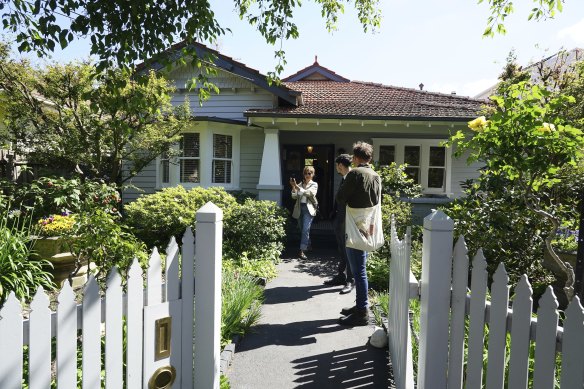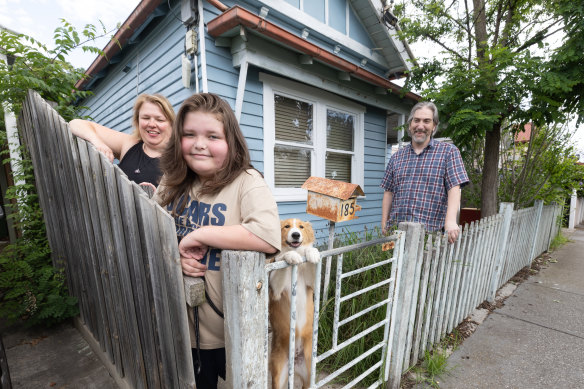Melbourne’s property market has started to swing back in favour of buyers rather than sellers, as house prices snap their streak of gains, the choice of homes for sale improves and competition eases.
Some buyers are now in a better position to negotiate a sale, largely in the more affordable apartment segment, experts say, as there are fewer parties competing for these properties.
It’s a contrast from the market earlier this year, when many buyers believed interest rate rises were over and frantically made offers.
But buyers’ chance of success depends on their finances, and some are struggling to take advantage of the slowing conditions as rate rises slash their borrowing power and prices remain high.
SQM Research managing director Louis Christopher said the property market was now changing to favour buyers, though it was a slow transition.
The total number of homes listed for sale had risen by 1.9 per cent in Melbourne in November, the biggest rise in listings across all capital cities, SQM data shows, giving buyers more choice.
At the same time, Melbourne dwelling values stopped rising and edged down 0.1 per cent in November, CoreLogic’s Home Value Index showed.
The auction market is pointing to modest falls in house prices too. Melbourne’s auction clearance rate reached 58 per cent in November, its lowest for the year
Clearance rates at 60 per cent or above usually mean prices are rising, while anything below indicates falls.
The lowest clearance rates across greater Melbourne included the inner suburbs (57.3 per cent), inner south (56 per cent), south-east (55.5 per cent), west (49.8 per cent) and Mornington Peninsula (52.2 per cent).
Christopher said these price falls showed vendors were compromising on price to get a sale over the line.
“It is slowly swinging towards a buyers’ market and our forecast for Melbourne is a modest to moderate decline in house prices to continue [in 2024],” he said.
While the market has changed, it’s not all smooth sailing for buyers. Higher interest rates and cuts to borrowing power make it tough for some to make an offer.
CoreLogic’s head of residential research Eliza Owen said conditions were still tough for buyers, who wanted to borrow enough to get into a market where house prices were still high.
However, they, and home sellers could be in a much better position next year if interest rates fall.
“Depending on whether interest rates fall and how much they fall, we may see a flurry of transaction activity when that reduction in the cash rate begins,” Owen said.
Jellis Craig Stonnington partner Michael Armstrong believed Melbourne’s market had shifted in favour of buyers, but only for certain types of properties.
Renovated or new homes are still selling quickly, Armstrong said. There were fewer of these properties on the market, so listings attracted more competition from buyers.

Apartments or homes in need of work were offering buyers more time to negotiate and less competition, he said.
“The sale of unrenovated stock is more in favour of buyers because they take a little longer to sell, and buyers can get a better deal – same with land value properties [tear down and rebuilds],” he said.
But the couple, both 47, plan to sell the Kingsville house they have owned since 2008, and plan to update it first, to make it more attractive to potential buyers.

“I am really nervous about selling,” North said.
“It’s not in a fit state to sell,” Stebbing said. “We’ll have to get a bridging loan to get things moving, and fix it up over the holidays.”
While they were happy with their Brunswick buy, closer to their children’s school, rate rises cut their budget and meant they had to adjust their expectations.
“We had to lower our standards,” Stebbing said. “Mostly places in our price range were not in a good state,” North added.
Wheatley Finance’s Andrew Wheatley, who helped North and Stebbing buy their Brunswick home, said some buyers had to rethink their approach to the market because of higher interest rates.
Some were being forced out of the market, as they couldn’t qualify for a mortgage, meaning there is less competition for more affordable properties.
“In the desirable suburbs of Melbourne, it feels like nothing’s changed,” Wheatley said. “But if you move to what first homebuyers are looking at, properties with a price range of $400,000 to $750,000 like a two-bedroom apartment or a townhouse, or a new build in the outer suburbs, there’s no rush or pressure to buy. I’d say it’s more of a buyers’ market.”
Source : TheAge

